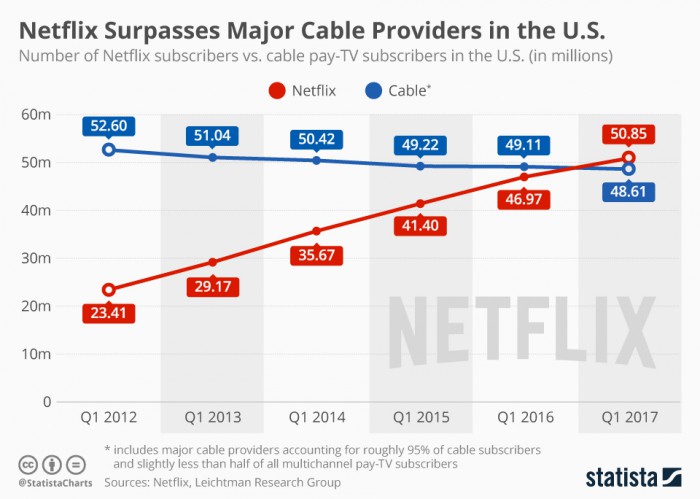An article by
The Wall Street Journal came out yesterday revealing Disney’s struggles with ratings and viewership decline and honestly, we’re not surprised. As a company that values innovation, we’re not shocked when large companies fail to innovate quickly. As online providers such as Netflix, Amazon and the infamous, endless blackhole of YouTube have garnered more and more viewership, the audiences are drifting from the endless channel surfing to the instant gratification of online video sources. From Joe Flint’s recent article,
Disney’s Channels: Children Are Tuning Out, alone we can identify five alarming trends in the media-moguls outlook of their current condition.
1. Ratings Over Reality
Experience is everything and the reality is the ratings don’t reflect the reality of viewership. The measurement for success for the last several decades in media was two-fold; ‘ratings’, and, ‘number of viewers’, but ratings were the leading value driver. If the ratings were high then viewership was up. This perception assumed, for many years correctly, that high ratings meant higher viewership because if the audience liked the show they kept watching.
However, in the digital age things have changed and how media is consumed is becoming the larger measure in the war for viewers. Making the ‘number of viewers’ of equal or more value that the ‘rating’ of the content. Trends like ‘Netflix and Chill’ and ‘Binge-watching’ have challenged traditional television by giving viewers all the content immediately verses waiting week by week for the next show to be aired. The crazy thing is that Disney has identified their challenge but has failed to make the changes needed to stay competitive, leading us to our second point.
2. Failure to Perceive & Pivot
In 2012, Netflix had a considerable amount of viewers at over 23 million, and has grown substantially year-after-year to the point of recently even beating out cable viewers in Q1 of this year according to Leitchman Research Group. (Don’t believe it?
Read more about this in Forbes). No one is surprised by this type of growth, especially with the increasingly, On-Demand generation of viewers, yet Disney has failed to pivot quickly to this challenge.
3. Preparing Instead of Perceiving
Piggy-backing off the last point, Disney’s cable-entertainment has been challenged just like many other cable based media companies by slowly preparing for change and not perceiving the trends. What makes
Amazon so great is their innovation, their ability to perceive new markets and tackle them quickly with purpose. Cable companies and their channel providers have been persistently challenged by the online media movement, without long-standing solutions. They’ve band-aided issues and failed to truly perceive market trends and create valuable end-user solutions.
Sorry cable, your DVR function is just not comparable to our Netflix accounts. Not only do you interrupt our DVR’d shows with commercials but you still make us record and watch each week, and the demand feature isn’t much better. The days of waiting for the next episode have passed away and the longer more grueling waits for instant bulk access to new seasons has taken over. Disney is going to need to look past its currently problems and start perceiving where, how and what the audience wants, and jump to that point if it wants to compete with current online media services.
4. Money Over People
And we quote, “Distributors have said they are wary of too much content being available outside of the pay-TV ecosystem.” Why you might ask? Well this is why, “Online video currently carries fewer ads and generates significantly less revenue than network programming, particularly if it is available to people who don’t subscribe to cable.” Let us summarize, we’ve been choosing the more profitable route instead of pleasing our customers. For example, when Disney first launched its Disney Channel app it came with one full episode and a bunch of clips, sorry Disney, but that was not satisfying to us nor our children, so back to the Netflix app we went and honestly we were hurt that you didn’t give us more of your shows. Netflix wooed us with less production value but an endless amount of content that kids did love and adults are sharing the same experience.
Disney has always been in it for the money, and that’s not inherently wrong, we all need to eat and have the ability to increase profits. However, it is a balance and one that is starting to tip in the wrong direction for Disney and other cable channels. In a “people over profit” generation new tech startups and smaller more agile media providers are seeking to please the individual user rather than just the general population. To take the market back Disney is going to have to start thinking about its end-user experience and not it’s users-for-profit model.
5. Dealing With The What Over The How
Our heads were shaking when we read, “that both Freeform and Disney Channel are confident that their new slate of shows will lift ratings.” Have they really not seen that its not the content they are delivering, but rather the way they are delivering it?! We’re not saying that their new shows have been hits, we haven’t seen them, we’ve been watching Netflix, but they’re not addressing the root issue which is how their content is consumed. The market trend is saying that people want to have access to their media anytime, anywhere, which is the ‘how’ to media delivery. Yet here Disney stands saying that their focus is on the ‘what’ – their content to try and win over viewers in an old model, but unfortunately again, that is only a band-aid to the real issue.
Conclusion.
First of all, we’re not saying that Disney is going to fail, they will be fine and they will eventually adjust and survive, although
ESPN isn’t helping either!
Why does DataYard care and write a blog about TV channels? Great question, we care because we’re committed to being informed and informing our audience about trends and shifts in markets. We also want to help provide solutions to our customers who might be feeling the same challenges in a new generation of audience users and consumers. DataYard is committed to:
- Taking a hard look at reality. We take an honest look at our services, products, and innovations, to ensure that we are providing what our clients need, but also keeping our finger on the pulse of what our clients want so we can exceed their expectations.
- Constantly Perceiving and Pivoting. Our goal is to help our clients find the long lasting solution, and in the IT space that means creating solutions that can pivot easily towards never-ending improvement.
- People Over Profit. We’re not looking to lose money and go out of business, but were also not going to choose out dated solutions that might be more profitable over what our customer needs. We’re committed to providing excellence in everything for our clients and their audience.
We see Disney as a corporate giant that has had trouble keeping up with the times and we’re not going to point fingers and say, “Oh, you stink”, but we are going to learn from their challenges and see how we can help our clients facing similar issues, while also making sure that we don’t make the same mistakes. DataYard is committed to helping others overcome the ever-changing landscape of IT, and like we always say, we’re here to Make IT Better!




 If you’ve had the chance to experience a DataYard award then you know they are all unique and often recognize the most extraordinary to the most nominal achievements. This year while celebrating our 23 years together at a Dragon’s game we wanted to recognize the giver of the most awards at DataYard, Dave Mezera. Without Dave, DataYard would cease to exist the way that it does today. His love and attention have made DataYard great to its clients and its team.
If you’ve had the chance to experience a DataYard award then you know they are all unique and often recognize the most extraordinary to the most nominal achievements. This year while celebrating our 23 years together at a Dragon’s game we wanted to recognize the giver of the most awards at DataYard, Dave Mezera. Without Dave, DataYard would cease to exist the way that it does today. His love and attention have made DataYard great to its clients and its team.








